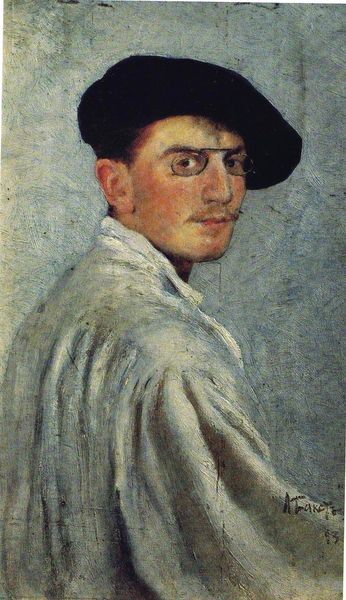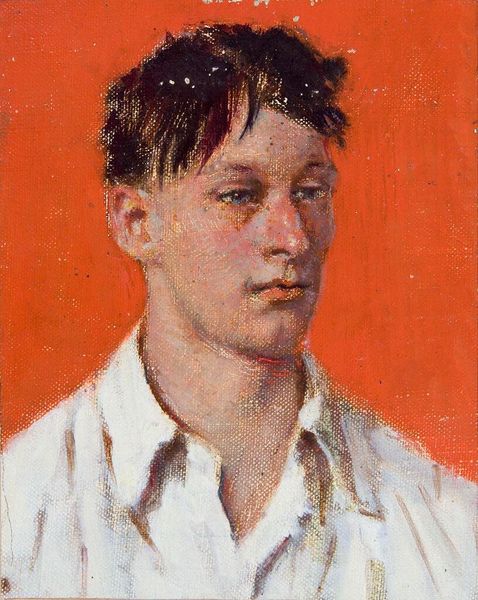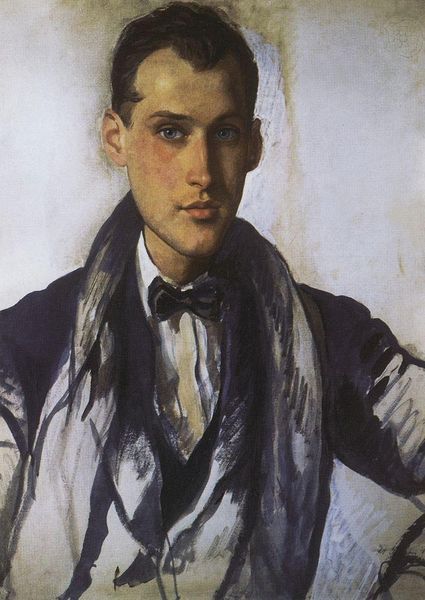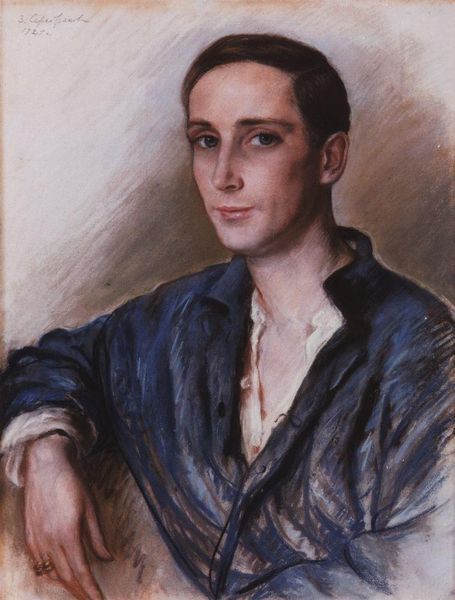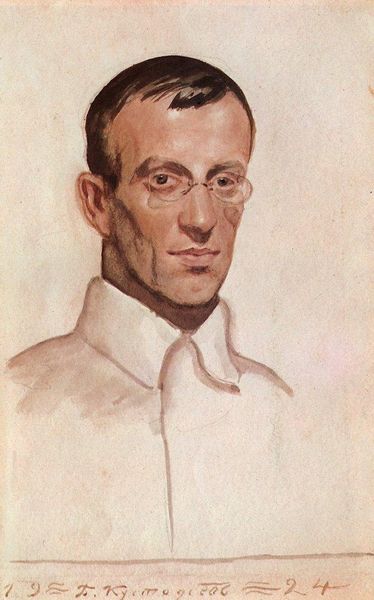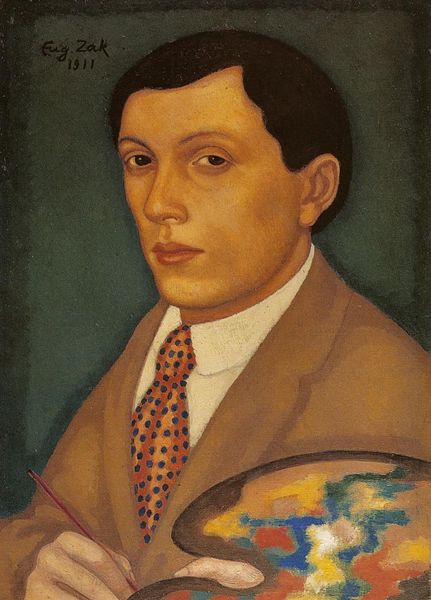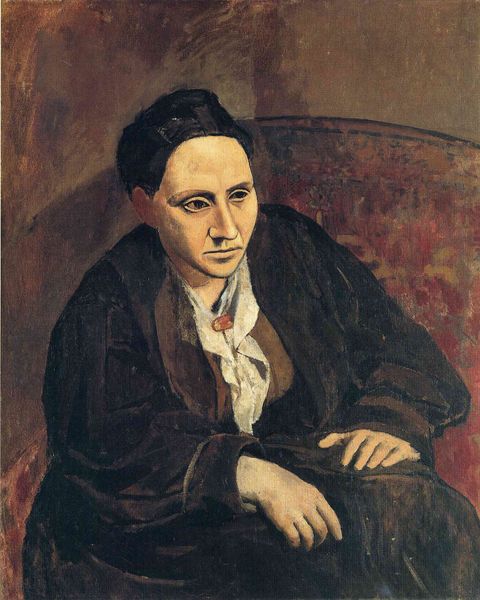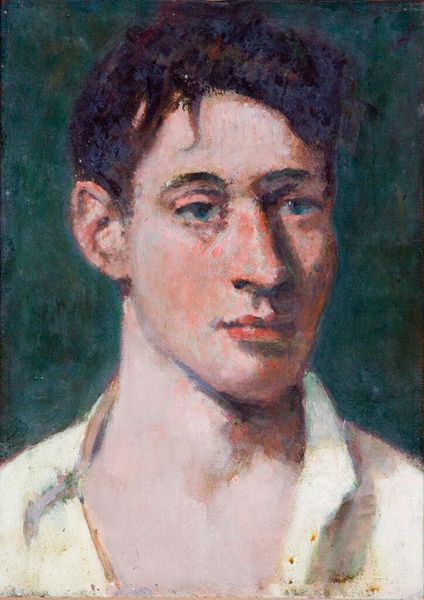
painting
#
portrait
#
painting
#
realism
Copyright: Jamie Wyeth,Fair Use
Curator: Here we have Jamie Wyeth’s 1963 portrait, titled "Lester." It stands as a remarkable example of realism in mid-20th century American art. Editor: Immediately, what strikes me is the incredible texture of the shirt. It looks like a slightly rough, perhaps linen fabric, and the subtle play of light really brings out the weave. It's the everyday made interesting through material. Curator: Absolutely. Wyeth often depicted everyday figures, and "Lester" is no exception. This work arrived amidst a shift in American portraiture—a move away from grand depictions of social elites, towards more introspective and approachable representations. This aligned with broader social changes toward the celebration of ordinary lives in the arts. Editor: Right. The material reality underscores that shift, doesn't it? A simple button-down replaces ornate costumes, and this really seems about focusing on Lester's character. His somewhat unusual haircut draws your attention to the person himself, unadorned, almost like focusing on raw materials before their transformation. Curator: Indeed. Consider the setting, it looks like he is in a dark enclosed space, and this simplicity throws the figure into stark focus. His upward gaze could signify various social interpretations, like longing or introspection that might imply specific mid-century values and expectations. The choice of subject reflects Wyeth’s exploration of personal identity, set against a cultural backdrop that was becoming increasingly concerned with individuality. Editor: And Wyeth doesn't shy away from representing a figure with such a direct and piercing gaze—even the slight flush in his cheeks feels intentional, emphasizing an element of physicality often sanitized in painting. Thinking about the physical act of creating the painting itself – layering the brushstrokes to get that nuanced skin tone must've taken great effort. There’s a deliberate artistry that makes this very ‘ordinary’ scene so arresting. Curator: It encourages reflection on who and what society chooses to portray in art and public life. "Lester" becomes a touchstone for broader discussions about representation, class, and artistic values. Editor: And on the beauty found in everyday life if you give materiality and form proper consideration. Wyeth's Lester remains very compelling through that very perspective.
Comments
No comments
Be the first to comment and join the conversation on the ultimate creative platform.


